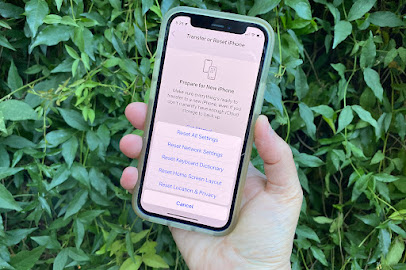Fish curry is a delicious and healthy meal that is popular all around the world. It is a flavorful and spicy dish that can be made with different types of fish and various spices. In this blog, we will discuss how to cook fish curry, including the ingredients, preparation steps, and cooking methods. We will also provide some tips for making the perfect fish curry, and answer some frequently asked questions about this dish.
Ingredients:
To make a fish curry, you will need the following ingredients:
Fish: You can use any type of fish for this dish, such as salmon, tilapia, cod, or haddock. Make sure the fish is fresh and has no bones.
Oil: Use vegetable oil or coconut oil for frying the fish and cooking the curry.
Onions: You will need 1-2 onions, chopped or sliced, depending on the recipe.
Tomatoes: You can use 1-2 medium-sized tomatoes, chopped or pureed, depending on the recipe.
Garlic and ginger: Use 1-2 cloves of garlic and 1-inch piece of ginger, minced or grated.
Spices: You will need a variety of spices, such as turmeric, cumin, coriander, chili powder, garam masala, and curry powder, depending on the recipe.
Coconut milk: You can use canned or fresh coconut milk, depending on the recipe.
Salt and pepper: Use salt and pepper to taste.
Preparation:
To prepare the fish curry, follow these steps:
Clean and cut the fish into bite-sized pieces.
Marinate the fish with some salt and turmeric powder for at least 15 minutes.
Heat some oil in a frying pan and fry the fish until golden brown. Remove the fish from the pan and set aside.
In the same pan, add some more oil and fry the onions until translucent.
Add the garlic and ginger and fry for another minute.
Add the tomatoes and cook until they are soft and mushy.
Add the spices and fry for a few seconds.
Add the coconut milk and some water, and bring the mixture to a boil.
Add the fried fish and let it simmer for a few minutes.
Adjust the seasoning and add some more salt and pepper if needed.
Garnish with fresh coriander leaves and serve hot with rice or naan.
Cooking methods:
There are several ways to cook fish curry, depending on the recipe and your preferences. Some common cooking methods include:
Frying: Frying the fish before adding it to the curry gives it a crispy texture and enhances the flavor.
Slow-cooking: Slow-cooking the curry on low heat for a longer time allows the flavors to blend together and makes the fish tender.
Pressure-cooking: Pressure-cooking the curry saves time and results in a flavorful and tender dish.
Tips for making the perfect fish curry:
To make the perfect fish curry, follow these tips:
Use fresh fish: Make sure the fish is fresh and has no bones. Frozen fish can also be used, but make sure to thaw it before using it.
Use the right spices: Use a variety of spices to add flavor to the dish, but don't overdo it. Adjust the spices to your taste.
Use coconut milk: Coconut milk adds a creamy and rich texture to the curry. Use canned or fresh coconut milk depending on the recipe.
Fry the fish: Frying the fish before adding it to the curry gives it a crispy texture and enhances the flavor.
Don't overcook the fish: Overcooking the fish can make it tough and dry. Simmer it for just a few minutes until it is cooked through.
Use the right type of fish: Different types of fish have different textures and flavors, so choose the right type of fish for your curry. For example, salmon is a rich and fatty fish that pairs well with strong spices, while tilapia is a mild and flaky fish that can be used in a variety of curries.
Use fresh ingredients: Fresh ingredients, such as onions, tomatoes, garlic, and ginger, will add more flavor to your curry than dried or powdered spices. Try to use fresh ingredients whenever possible.
Use a good quality pot: A good quality pot will distribute heat evenly and prevent the curry from sticking to the bottom. A heavy-bottomed pot or a non-stick pot is ideal for making fish curry.
Adjust the heat: Adjust the heat according to your taste. If you prefer a mild curry, use less chili powder or skip it altogether. If you prefer a spicier curry, add more chili powder or use fresh green chilies.
Let the curry rest: Let the curry rest for a few minutes before serving. This will allow the flavors to blend together and make the curry more flavorful.
Serve with the right accompaniments: Fish curry is best served with rice or naan bread. You can also serve it with a side of cucumber raita or a simple salad to balance out the flavors.
Experiment with different recipes: Don't be afraid to experiment with different recipes and ingredients to find the perfect fish curry for your taste. You can try adding vegetables, such as potatoes or carrots, or using different types of spices to create a unique and flavorful curry.
Use fresh herbs: Adding fresh herbs, such as coriander or mint, can enhance the flavor of your fish curry. Add them towards the end of the cooking process, just before serving.
Use tamarind or lemon juice: Tamarind or lemon juice can add a tangy flavor to your fish curry. Add it towards the end of the cooking process, just before serving.
By following these tips, you can make the perfect fish curry that is flavorful, spicy, and delicious. Whether you are a beginner or an experienced cook, fish curry is a dish that is easy to make and always satisfying. So, go ahead and try making your own fish curry today!


.jpeg)



.jpg)




.jpg)
